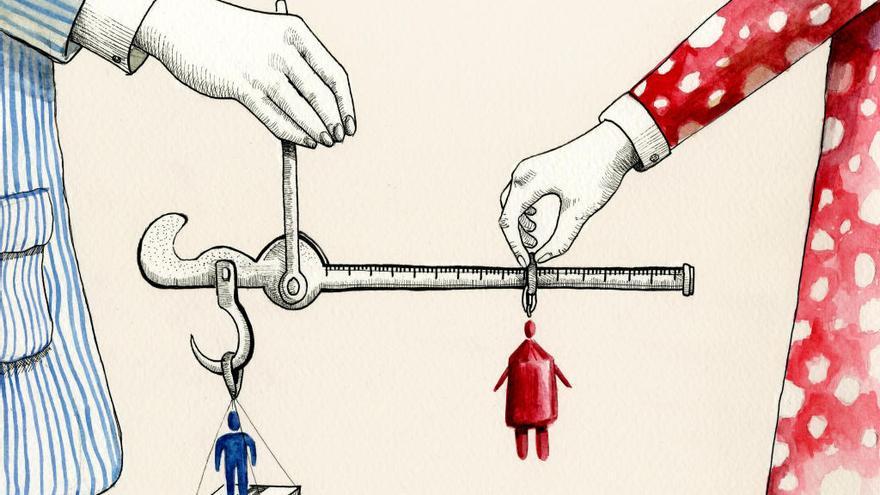8/2/2022 Week 6: Response to"Differences in Emotional Expressivity"
Response to "Differences in Emotional Expressivity"
Everyone has born with the capacity to feel and express what we are feeling, but not all express our feelings in the same way. Expressing feelings can change from culture to culture. That is why Emotional Expressivity is easily misunderstood.
Professor Iver explains this by showing an "Emotional Expressivity Scale". He divided a line in two: Low Tolerant Expressivity (left side) and High Tolerant Expressivity (right side).
Low Tolerant Expressivity Cultures
People with a Low Tolerant Expressivity Culture do not express their emotions in public. They are more reserved and do not show their feelings in front of others.
Some places with low tolerant expressivity are the countries of Asia, Scandinavian (for example, Denmark, Norway, and Sweden). And some places in the West of the United States.
High Tolerant Expressivity Cultures
People with a High Tolerant Expressivity Culture express and show their emotions and feelings in public without any problem. They are the same here and there, wherever they are.
Some places with high tolerant expressivity are the Hispanic countries (for example, Mexico, Brazil, Puerto Rico, Cuba, Argentina, Colombia, etc.), Middle East countries, Italy and Iran. And some places of the East of the United States, for example, New York.
People with Low and High Tolerant Expressivity Cultures are very different. Professor Ivers said that people with a low tolerant expressivity culture see people with a high tolerant expressivity culture as less civilized, more dangerous, less disciplined, and less intelligent. On the other hand, people with a High Tolerant Expressivity Culture see people with a Low Tolerant Expressivity as boring, dull, or holier. This is a misunderstanding because they stereotype people by their emotional expressivity.

When we meet new people, some people are more reserved than others. Obviously, we do not try in the same form people that we have known for many years. But there are people that are more open, they are more spontaneous and maybe ruder with people even if they just met them. Personally, I like to show myself as I am from the first time, according to the norms I live by, but of course, with time there is more confidence, but this does not mean that I leave my values and norms aside. Maybe I could be more tolerant with others because they are free to express their emotions but when they see I do not do the same they respect me which I thank them.
Facial and Corporal Expressions
Professor Ivers said, "Studies have shown that in private we all express the same emotions in a similar way. But in public, we're dissimilar in the way we express our emotions".
There are different facial expressions for different emotions that we can detect more easily.
Accordingly to the American Psychological Association, the most common are:

- Joy
- Surprise
- Anger
- Contempt
- Sadness
- Disgust
- Fear
For example
Joy
We smile when we feel joy or happiness, but in Asia, people are low-tolerant expressivity and they do not show their feelings in public. They only smile when they feel embarrassed or confused. This is a cultural misunderstanding.
Fear
Cuban and Puerto Ricans are very spontaneous, they refer to themselves "chabacanos" because when they speak, they are very extroverted. When they speak it may seem that they are angry, or surprised because they speak very loudly. They speak by moving their hands and body as if they are going to dance or hit you, which is why many people are afraid of them.
Anger
When people are angry, they sometimes not only change their facial expressions but also use parts of their bodies to express what they are feeling with offensive movements.
So as teachers or future teachers, we need to talk to our students to avoid this in class. We need to help them to avoid future situations that can happen in our classroom by teaching them to be tolerant with others and respect each other.
As we said before, most people get angry and show their feelings with the same facial emotions but in Asia for example, in Japan, people don't express anger, they do not differentiate Anger, Fear, or Surprise because these emotions are very similar to them.
Mexico
There are many other facial expressions that there are not listed above. For example, here in Mexico, there are different expressions today that somebody is crazy. These are some fun ways to express this feeling for others' behavior but remember that this also could be rude for others, and they could get angry with you. My grandmother said, "Remember that crazy people do not like others say to them that they are crazy, so avoid saying someone the truth and let them be"
Another feeling expression in Mexico is love, we have the custom of showing our emotions in public. For example, a couple can walk hand in hand, kiss, or hug. But in Asia, this is not allowed. There are Asians living in Mexico, and they may be shocked by the things they see in our country or in other countries with a high tolerant expressivity culture because Asians do not show these feelings in public.
As teachers or future teachers, we must better investigate and learn all these emotions and feelings and teach them to our students and we must also learn the cultures of origin of our students to avoid some embarrassing situations in our classrooms.
- What emotions are easy for you to express? And what feelings do you need to work on to avoid problems with others?
Leave your comments.
References:
1)Image created in WordArt
2)Image created in WordArt
3)American Psychological Association https://www.apa.org/science/about/psa/2011/05/facial-expressions#:~:text=Thus%20there%20is%20strong%20evidence,surprise%20(see%20Figure%201)
4)Imagen emotions https://www.apa.org/images/PSA-2011-05-matsumoto-fig1_tcm7-115934_w1024_n.jpg
5)Image http://cfsrecoveryproject.com/wp-content/uploads/2014/03/8448173_s.jpg
6)Image https://media3.giphy.com/media/3osxYrwWEEUdCTm9DG/giphy.gif
7)Image https://ngs-space1.sgp1.digitaloceanspaces.com/am/uploads/mediaGallery/image/1626461355224.jpg-org
8)Image https://i.giphy.com/media/XB43a39jYFT6JxjVtR/giphy.gif
9)Image https://thumbs.dreamstime.com/z/usted-est%C3%A1-loco-43163063.jpg
10)Image https://www.tierrapost.net/wp-content/uploads/2017/12/expresiones-para-decir.jpg










































